Although PVA adhesives - acrylic adhesives or wood adhesives, as they're known - are the most popular adhesives in woodworking shops and furniture factories, there's still the impression that they're the only adhesives to use when you don't have anything better. Nothing could be further from the truth! PVA adhesives are very strong adhesives that can also be used in difficult, high humidity areas such as bathrooms or kitchens or for gluing wood that is subjected to pressure impregnation or high temperature treatments. The important thing is to know which quality of aracite to choose. As lately I have come across all sorts of false claims about these adhesives, I think it would be useful to dismantle them. Here are just 7 of the most common claims.
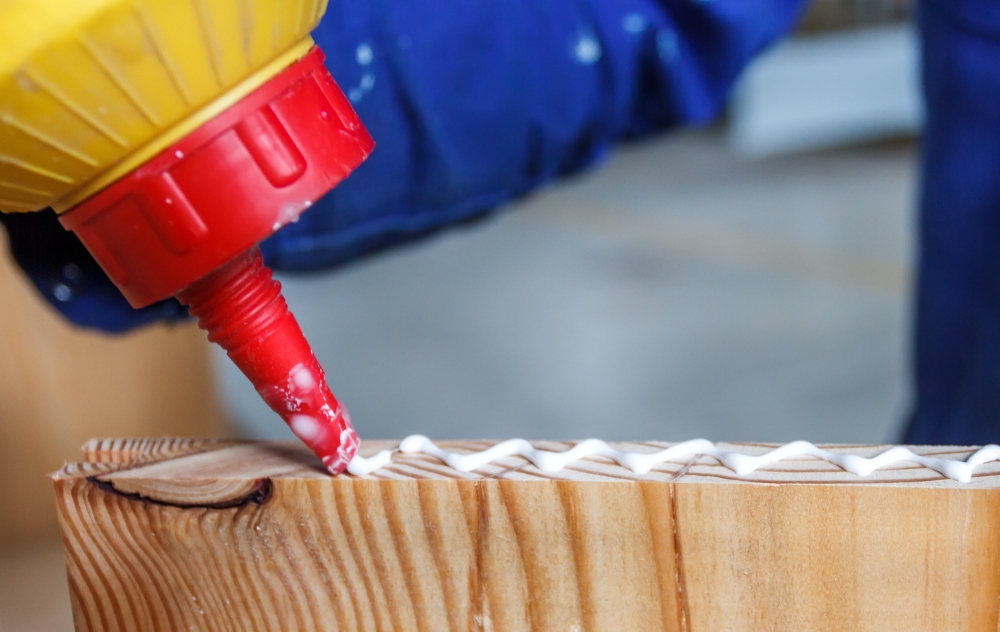
1. "The aracite is not resistant to glue wood used outdoors."
Often, if someone dares to recommend the use of aracite outdoors, a real hysteria ensues. Enough are found to preach dismantling the object at the first shower of rain, leaving a total mess behind. I dare to contradict the ambassadors of the apocalypse by informing them that PVA adhesives with very good outdoor resistance have been on the market for some time. The important thing is not to choose just any kind of adhesive, but those from moisture classes D3 or D4. D3 can be used if the object sits outside but is more protected from the weather (under a roof or awning, for example), while D4 adhesives can be used for objects that sit directly in the rain, such as beehives made of timber panels. About adhesives PVA TISZABOND, used for years to make beehives that mostly go for export, I've already said here. And about those used in the industrial production of solid wood panels, here.
For those who want to use airbrush adhesives to glue objects used outdoors, I recommend always using a adhesive D4. This will ensure that any risk is removed.
2. "The thicker the glue line, the stronger it is."
Rather than being too little, it is better to be too much, as a Romanian saying goes. It does not apply to the glue. A thick layer of hardened adhesive can lead to stresses on the inside and cracks in the layer holding the two glued elements together. From here to total destruction of the glue is not much further.
The consumption/m² is recommended in the product data sheets or on the label. A slightly higher or lower quantity will not lead to sticking problems, but if the quantity differs greatly from the recommended quantity, problems will occur, either because the layer is too thick or too thin.
3. "The higher the pressure, the stronger the bond will be."
In order to be bonded, the elements to which the adhesive is applied must remain in contact for a period of time. This is done using presses or cleme. They create that necessary closeness until the adhesive reacts to form the adhesive film that bonds the elements. Some believe that the greater the pressure applied, the stronger the bond will be. It probably all stems from the idea that the pressure 'pushes' the glue into the wood, increasing the glue line, or from the idea that using a greater number of clamps gives a better bond.
Very high pressure does not help to increase the strength of the solder, but quite the opposite. Too much pressure will cause some of the necessary adhesive to be squeezed out, resulting in a weaker bond. And a large number of clamps is useful to achieve a more uniform pressure on the surface of the parts to be soldered so that a continuous and uniform adhesive film results. The number of clamps used does not influence the pressure applied. Ways must be found to ensure that the pressure is evenly distributed (soldering pieces placed between two panels that are clamped together).
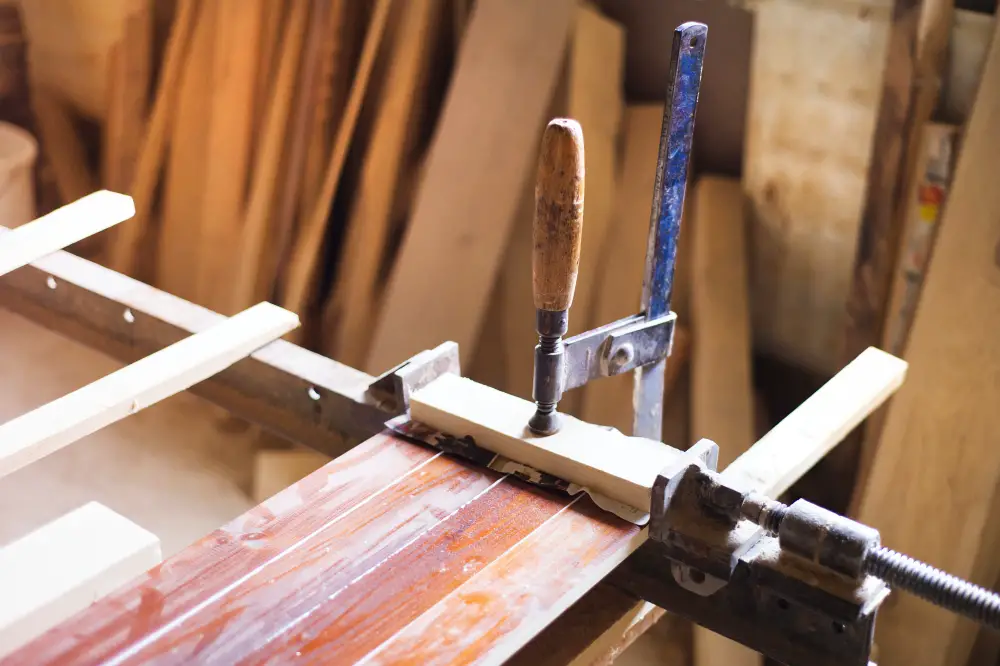
4. "Even if the wooden elements are crooked, once tightened in the press they will stick properly."
The elements to be glued had high humidity and, when drying, deformed. Or they have been stored incorrectly and have twisted, bent or warped. That's OK, some people say, we glue them in the press and it's done. Not so. The moment you try to straighten a crooked element, it will resist, stresses are created inside and the wood can crack. In addition, the warped piece has "memory" and will try to warp after gluing. This will put pressure on the bonding film, lowering the overall strength of the glue. That is, if that solder had withstood a certain breaking force, it will decrease and be affected from the inside.
It can also happen that the deformation leads to a too close proximity between certain points of the two parts. At those points the amount of adhesive will be less or not at all. After bonding, that will be a weak point, failing at the first opportunity.
Therefore, elements that have deformations must be straightened before being glued.
5. "If the adhesive has thickened in the can and is different from the last use, we dilute it and use it."
Thickening of the adhesive sometimes indicates that the polymerisation reaction has already started. This means out of warranty and reduced bonding properties. What actually happens? As we have also said herePVA adhesives are aqueous dispersions, i.e. they are molecules that float in water. As the water disappears, the molecules move closer together and the reaction begins, forming the adhesive film. If the adhesive has thickened in the can, it means that some of the molecules have reacted and there are fewer reactive molecules left to cause bonding. Adding water does not break the bonds formed but dilutes the remaining reactive adhesive even more. Continuing, we will get a weak adhesive film that will break at the first aggression.
If you know the adhesive is out of warranty, but it looks like it would work used if you thin it, don't do it. You're risking a lot more than the price of another can of glue.
6. "If the aracite has frozen, it can no longer be used."
Not always! Indeed, in the past, any water-based product used for gluing or finishing wood could not be used if it froze. Its properties were altered, even if its appearance was almost unchanged. In the meantime, however, necessity has led manufacturers to think of solutions to make adhesives less sensitive. I have already told you about TISZABOND D3-D adhesive, which Szolvegy has obtained especially for a customer in Miercurea Ciuc., Romania's cold pole. As the existing conditions made it impossible to reach a temperature above 0°C in the factory warehouse, they made an adhesive that could withstand repeated freeze-thaw cycles without losing its original properties.
Indeed, not all PVA adhesives can be used after freezing. But there are some that can be used, the important thing is to look for and use the right ones.
7. "The arachnid can only glue wood to wood."
That arachnids bind paper and textiles, was already known. But a good PVA adhesive can do more than that. It can glue wooden steps to concrete stairs or window or door frames to brick or concrete walls. In such cases it is very important that one of the glued sides is wood and the other side is a porous material so that the adhesive penetrates inside and the glue is strong.
Plowsticks are adhesives you can rely on when gluing wood. But it's very important to choose the right adhesive and put quality and durability of the final product first.


















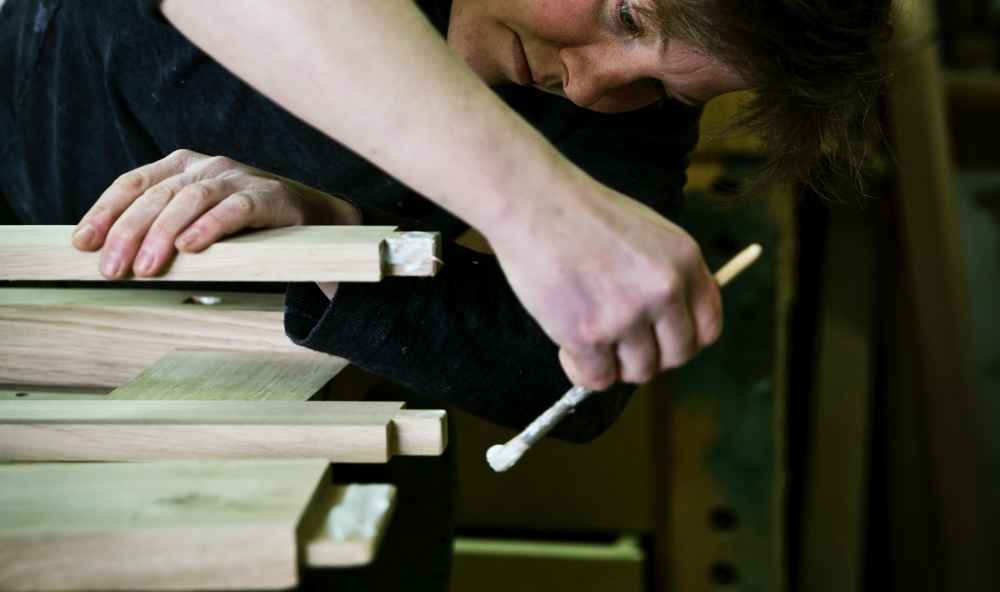

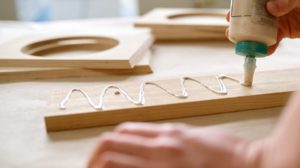
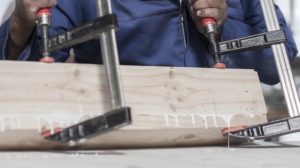
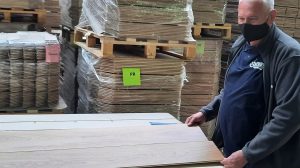
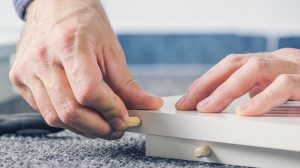
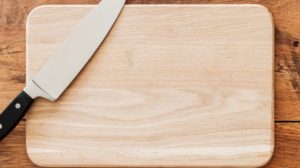




You have talked about aracet, you have praised it, you have included some names in the text, but maybe in a future article you could make a comparison with other adhesives.
Hello!
Below is a link to an article with 5 types of adhesives used mainly for DIY projects. I hope you find it helpful.
An article on the main adhesives used in the wood industry will be published soon.
All the best!
https://revistadinlemn.ro/2018/07/17/5-tipuri-de-adezivi-pentru-proiecte-de-bricolaj/
A certain amount of pressure is required when gluing wood with acrylic. With polyurethane or epoxy glue you can fix it, no pressure is needed, but with aracet you really need pressure. (With polyurethane glue, some pressure is useful - if there is enough pressure, the polyurethane glue swells when it dries to the point where it foams, or if it foams inside the glue, the resulting glue is weak. So it's useful not to give it enough room to foam).
That pressure doesn't need to be excessive, but they've done some experiments with dozens of pounds applied per square inch, and they haven't managed to ruin the strength of the joint - there's still enough glue left in the solder to make the solder strong.
What happens in the gluing area with PVA, which is a watery suspension, is that the wood swells. But wood is not isotropic, so along the glue, which is usually along the grain, the swelling in the direction perpendicular to the surface of the glue is significant but not uniform. As the glue hardens, from application to drying, that deformation basically waves as adjacent areas swell and then dry and deflate. Those waves cause permanent microscopic deformation of the glue layer, which deformation affects the strength of the glue, precisely because it moves the glue layer as it cures.
But if you apply a pressure of even a few hundred grams per square centimeter, those waves become very small in amplitude - even if the wood wants to expand, the fact that it is compressed doesn't let it, so it expands only as much as the elasticity of the surrounding wood allows. The fact that the expansion depends on the surrounding material also means that the more thicker the pieces to be glued, the greater the pressure required.
That seemingly small pressure of just a few hundred grams per square inch, translated into clamping force, can result in hundreds of pounds of clamping force being required for a larger surface area clamp.
What grain size is recommended to have the parts sanded before gluing with a D3 grit
60-80-100 are ideal grain sizes. Too coarse a grain size leads to bonding defects because the elements do not fit together perfectly. Too fine a grain size absorbs too little adhesive into the wood and the glue may lose strength.